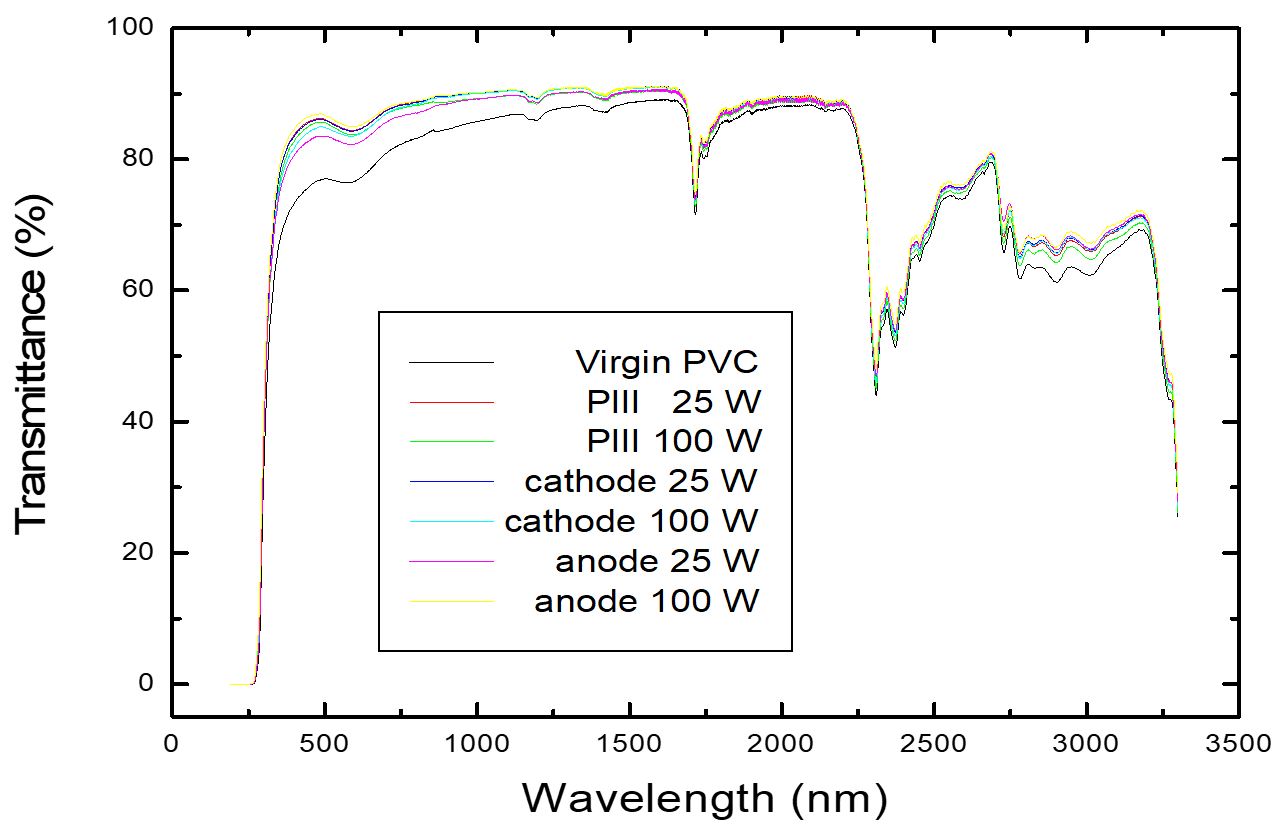Abstract
In this work we discuss the wettability, chemical composition, surface morphology and optical transmittance of polyvinyl chloride (PVC) samples treated by Plasma Immersion and by Plasma Immersion Ion Implantation. The total pressure of N2 or SF6 was 6.66 Pa, for treatments of 900 s, applied rf power of 25 and 100 W, and the substrate temperature was about 298 K. In PIII, high voltage pulses of -2400 V at a cycle time of 30 µs and a frequency of 300 Hz were used. The wettability of the samples was assessed via contact angle measurements, which indicated either hydrophilicity or hydrophobicity, depending on the plasma composition. X-ray Photoelectron Spectroscopic analysis confirmed strong fluorine attachment to the surface after treatments using SF6 plasmas, and the presence of oxygen after treatments using nitrogen plasmas. Atomic Force Microscopy images showed that the roughness Rrms, depends on the plasma conditions. Optical transmittance in the visible region, T (λ), was increased by plasma immersion. The greatest contact angle observed was 142º (PI cathode), while the highest roughness was 213.2 nm. The highest optical transmittance in the visible region was around to 90% (PI anode).
Keywords:
PVC; plasma immersion techniques; contact angle; XPS; AFM; optical transmittance

 Thumbnail
Thumbnail
 Thumbnail
Thumbnail
 Thumbnail
Thumbnail
 Thumbnail
Thumbnail



